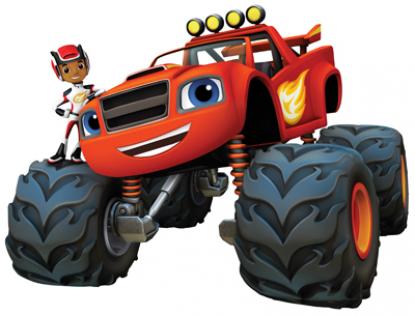We’ve long heard that there are not enough students studying science and maths. Gradually there are efforts being made across the education sector to shift the focus to the related science, technology, engineering and mathematics (STEM) subjects in schools following a government review last year. But experts say it’s also important for pre-schoolers to be introduced to STEM concepts early on in their learning experience.
Television channel, Nick Jr, recently launched Australia’s first pre-school TV covering STEM concepts in every episode, known as Blaze and the Monster Machines. By providing appealing, thought-provoking content, the show focuses on exposing little ones to these important lessons.
“Pre-schoolers are blessed with great confidence when it comes to learning,” says Professor Lyn English, Professor of STEM in Education at Queensland University of Technology.
“Often they are not given enough credit for their problem solving abilities, when problems are presented to them in an environment that is challenging and appealing.”
Professor English says that for programs such as Blaze o maintain their educational value, it’s important that children are invited as an ‘active’ watcher.
She says the show does this through monster truck Blaze and his eight-year-old driver, AJ, whose adventures lead them to explore the physics of how things move; tackle problems through scientific inquiry and mathematics; and discover the parts needed to make everyday technologies work. The show’s interactive features, such as equations that appear as though bubbles and encourage children to say the names of vital engine parts, bring these STEM concepts to life on the screen and help make them appealing to their young audience.
“Blaze gets children excited about STEM by encouraging their curiosity about how things work,” says Nick Jr’s Director of Television and Digital Content, Hugh Baldwin.
“Each episode is filled with monster trucks, physical humour and upbeat original songs that highlight STEM concepts such as adhesion, friction, force, trajectory and magnetism.”
Educational shows also provide a platform for parents to apply the ideas they feature to their child’s everyday life.
“Try reminding children of what they saw on television in their wider environment,” suggests Professor English. In this way, concepts presented by their favourite onscreen characters will soon be ones they reference in their own play.
“Young children are natural engineers, mathematicians and scientists. STEM learning occurs regularly in their everyday living. From building with blocks, to stacking toys, to designing games; these are all STEM experiences in their most basic form.”
Professor English suggests the key to interpreting STEM for pre-schoolers is in encouraging them to look for the underlying ideas in what they observe and do.
“Young children must be critical and reflective in their thinking. We can assist this by teaching them to not just accept information they are given,” she says.
Some things to try are:
-
Simply ask your children questions about things they see and do, such as
- "What do you notice?"
- "How does that work?"
- "Why?"
- "Could you have done that in a different way?"
- "Tell me how"
- Give your little one time to think and respond with their own answer;
- Expand on activities that your pre-schooler feels comfortable with, such as building blocks. Replace wooden blocks with a different material, such as foam or plastic, which will require them to consider key STEM concepts of shape, design, balance, and structure.
Professor English says that helping pre-schoolers to join the dots between these interconnected STEM concepts early on in life is a great way to prepare them for full-time schooling, something which can only be a good thing for the future of learning.



















__small.png)










